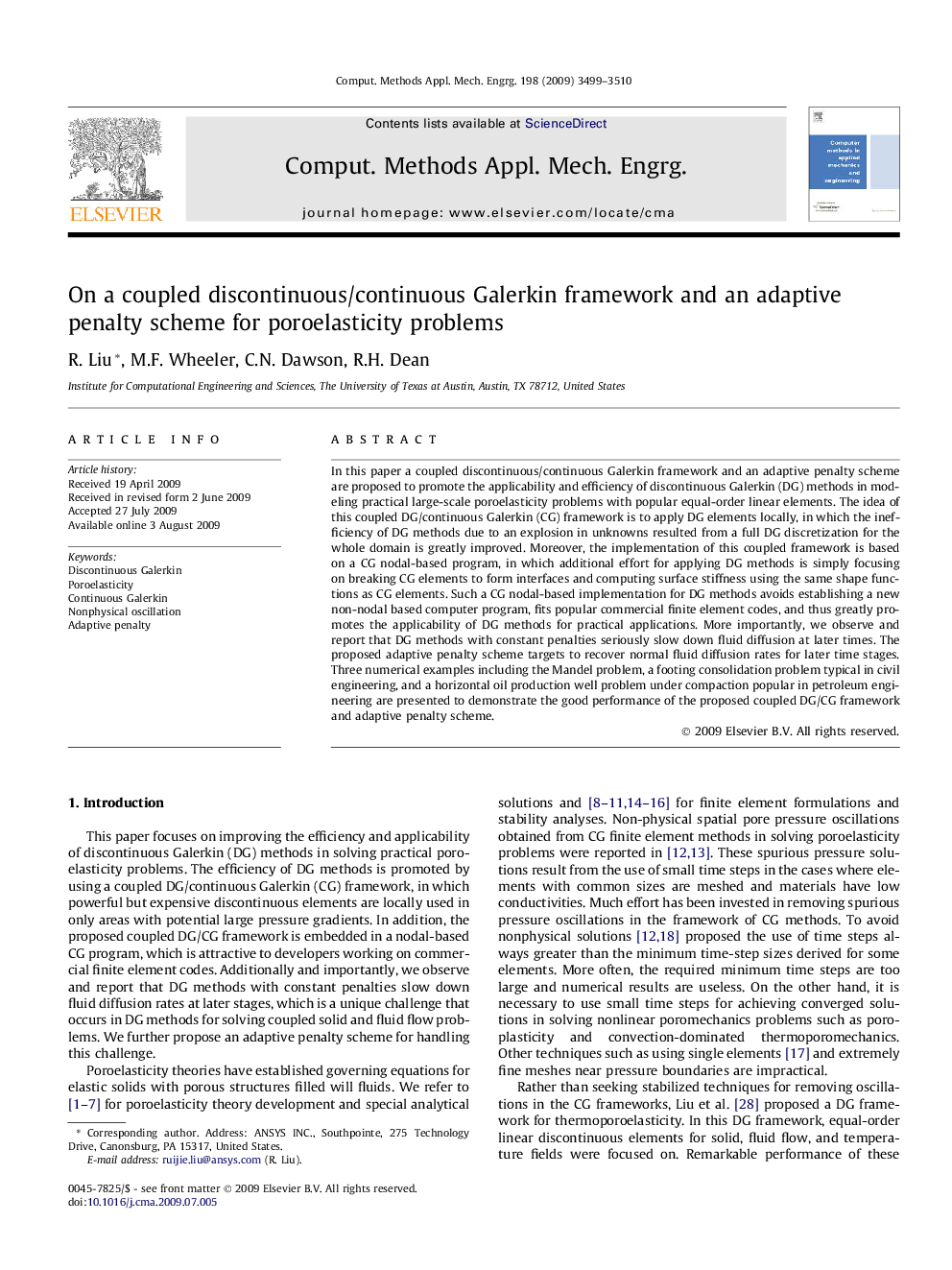| Article ID | Journal | Published Year | Pages | File Type |
|---|---|---|---|---|
| 499193 | Computer Methods in Applied Mechanics and Engineering | 2009 | 12 Pages |
In this paper a coupled discontinuous/continuous Galerkin framework and an adaptive penalty scheme are proposed to promote the applicability and efficiency of discontinuous Galerkin (DG) methods in modeling practical large-scale poroelasticity problems with popular equal-order linear elements. The idea of this coupled DG/continuous Galerkin (CG) framework is to apply DG elements locally, in which the inefficiency of DG methods due to an explosion in unknowns resulted from a full DG discretization for the whole domain is greatly improved. Moreover, the implementation of this coupled framework is based on a CG nodal-based program, in which additional effort for applying DG methods is simply focusing on breaking CG elements to form interfaces and computing surface stiffness using the same shape functions as CG elements. Such a CG nodal-based implementation for DG methods avoids establishing a new non-nodal based computer program, fits popular commercial finite element codes, and thus greatly promotes the applicability of DG methods for practical applications. More importantly, we observe and report that DG methods with constant penalties seriously slow down fluid diffusion at later times. The proposed adaptive penalty scheme targets to recover normal fluid diffusion rates for later time stages. Three numerical examples including the Mandel problem, a footing consolidation problem typical in civil engineering, and a horizontal oil production well problem under compaction popular in petroleum engineering are presented to demonstrate the good performance of the proposed coupled DG/CG framework and adaptive penalty scheme.
